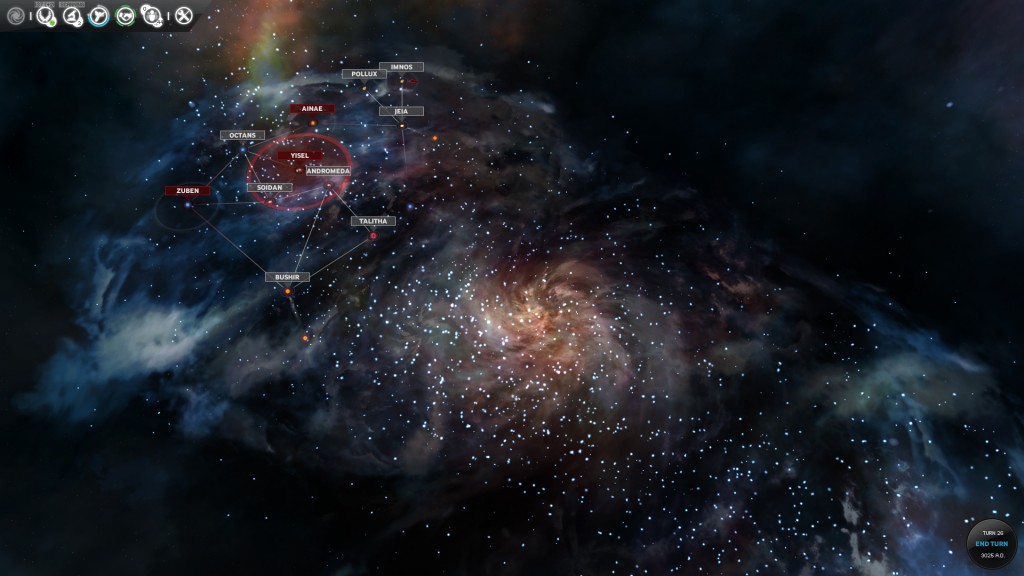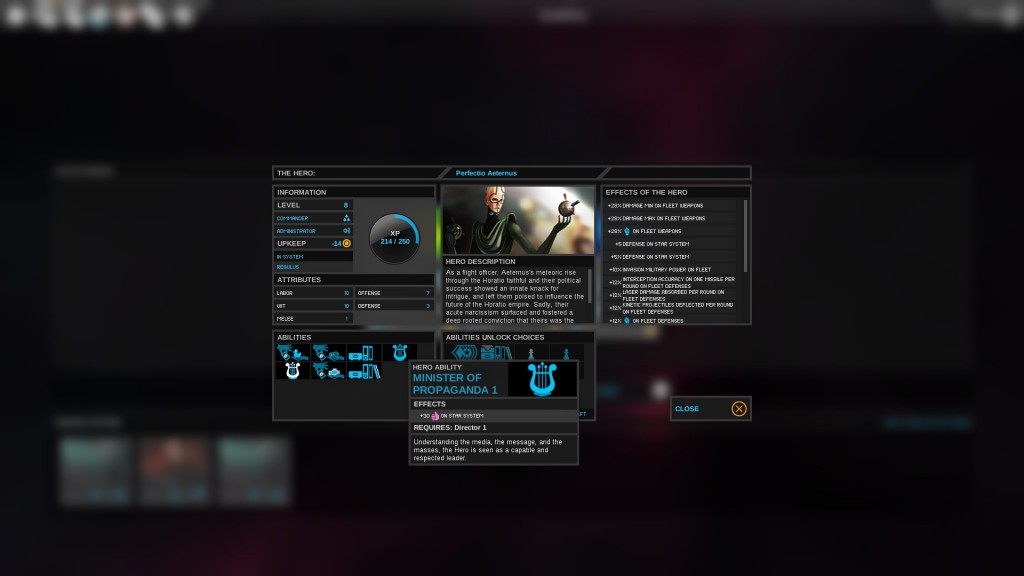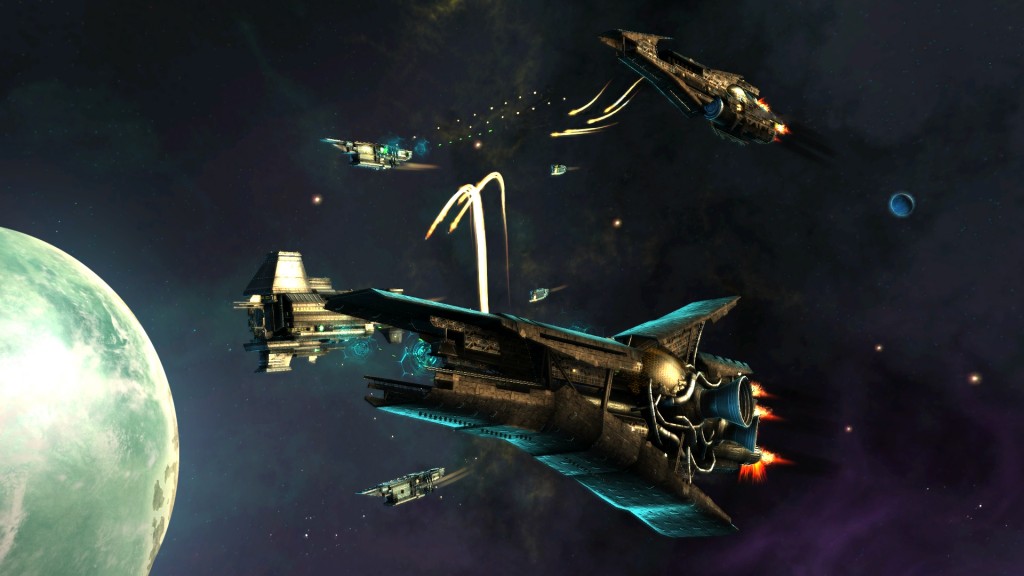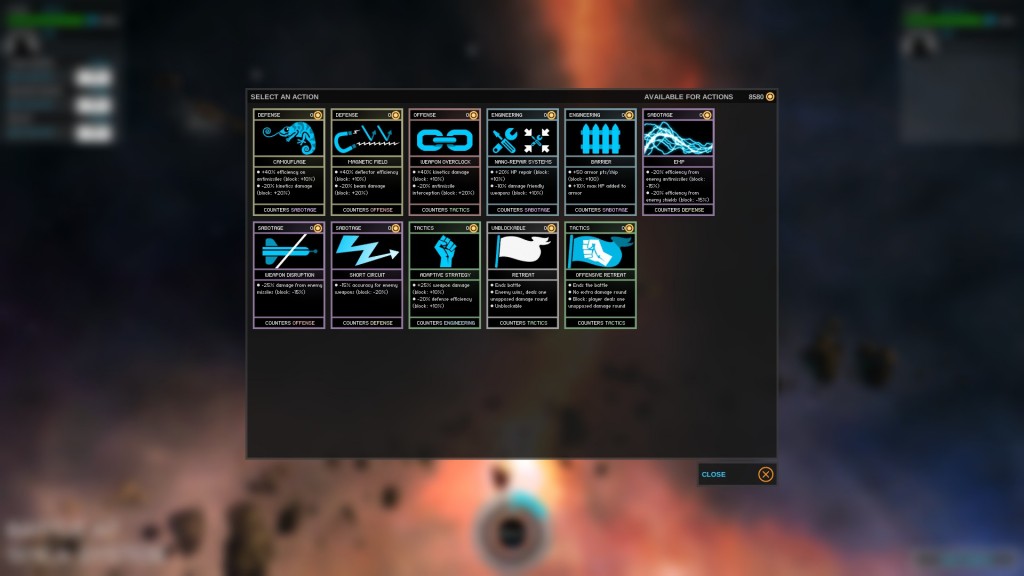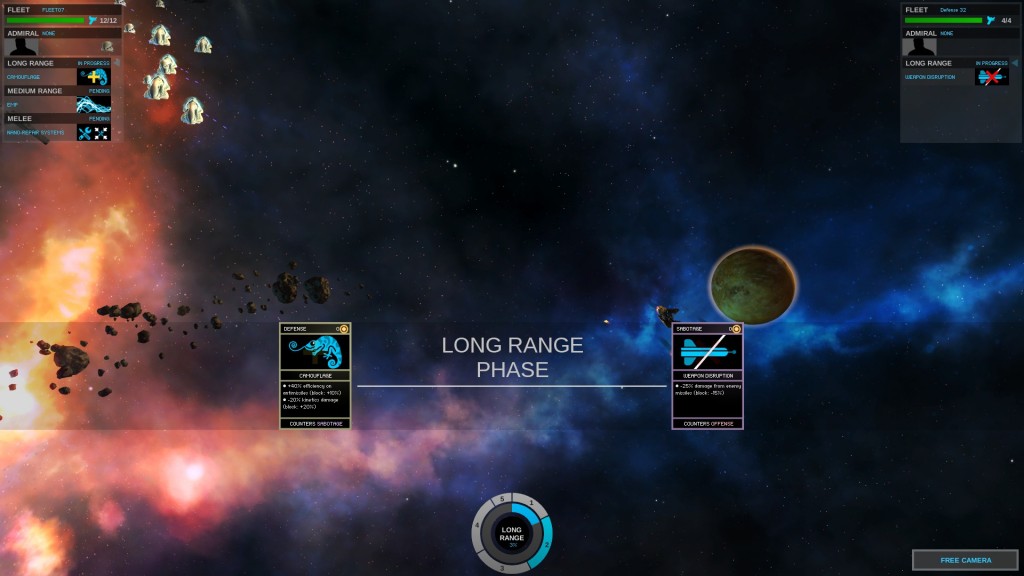I have been playing computer games off and on since the mid-70s (“Star Trek” on the DECSystem-10 at BYU) and did game design and development myself in the 80s (Sundog: Frozen Legacy) while also writing for two gaming publications (The Space Gamer and Computer Gaming World). My favorite genre over the decades has been the so-called “4X” games: eXplore, eXpand, eXploit, eXterminate. These have included such games as Galactic Empires, Stars!, Masters of Orion (I and II, not the wretched III), Sid Meier’s Alpha Centauri/Alien Crossfire, Sid Meier’s Civilization series (especially the Fall from Heaven II mod for Civ IV), Galactic Civilizations I and II, and others.
That said, I don’t play computer games as much as I used to even five years ago. But back in early May, I had a hankering to play a 4X game, preferably space-based, that I hadn’t played before. I downloaded a few off of Steam, but wasn’t that taken by any of them. Then — also on Steam — I came across a pre-release (alpha) offer for a new 4x game called Endless Space, being developed by Amplitude Studios out of France. I bought the pre-release, installed the alpha, and started to play.
Sometime in the wee, small hours of the morning, I dragged myself to bed. By the end of the first week of having Endless Space installed, I had put in nearly 40 hours playing the game (I have mixed feelings about Steam tracking how much time I spend playing a given game). More after the jump.
I’m not sure what was more stunning: how well designed the game and its user interface was, or how rock solid and relatively complete the game was for being an “alpha” version. If you go to the Endless Space forum at Amplitude’s website, you’ll find that same comment echoed constantly by posters who, like me, purchased it as an alpha release. And the game just kept getting better with each subsequent alpha release. I did get a bit worried with some performance issues in the beta releases, but the final release — shipped on July 4th — made all those go away and added yet more features and content.
The basics of the game are no surprise to anyone who has played 4X games, space-based or not. You select your starting civilization — one of a number of human or alien races — and start exploring, colonizing, and improving systems. At the same time, you do research up four basic technology trees (exploration, diplomacy, applied science, warfare) that unlock new capabilities. You have a number of victory conditions — diplomatic, conquest, scientific, and so on. And when you run into other races, you can negotiate, you can trade, or you can fight. (Note: you can click on any of the screenshots below to see them in higher resolution.)
So what are the distinguishing aspects to Endless Space? Let’s start with travel. When the game starts, your ships can only move between star systems connected by ‘cosmic strings’ at a non-instantaneous distance/turn rate. With certain research, you can also travel through occasional wormholes that connect pairs of systems; such travel is instantaneous but consumes all remaining movement points for that ship for that turn. With more research, you can unlock warp drive, which allows direct, if slower, movement between system without use of cosmic strings or wormholes. In all cases, when you move a ship from one system to another, the game will automatically determine the fastest route (combination of strings, wormholes, and direct travel) based on your current technology and other factors (e.g., intervening civilizations that you don’t have permission to move through).
Each system that you colonize has one to six planets of a variety of types (terran, ocean, desert, lava, gas giant, asteroids), which can be of varying sizes and support varying populations. Most planet types cannot be colonized at first; tech research is required to unlock these types for colonization. Each colonized planet in each system produces — or consumes — four basic aspects: food, industry (manufacturing), dust (money), or science (research), known collectively as FIDS. Improvements (“exploitations”) on the planet can produce more of just one of these four aspects, though you can change the exploitation as you want. Furthermore, the less “terran” a planet it, the more it causes natural discontent among its population (e.g., inhabitants prefer a terran planet to a lava planet or a gas giant); the sum of contentment (or lack thereof) among all the planets in a system produces the general contentment level of the system, which in turn can impact production. Each planet may have additional aspects (e.g., ancient ruins, meteor strikes) that affect both FIDS and contentment; furthermore, some planets may be mined for a specific mineral or substance — unlocked by tech research — which can impact FIDS/contentment on that planet, manufacturing of certain ship components, and aspects of your civilization as a whole. Finally, in addition to specific planet exploitations, there is a growing list (unlocked by tech) of system-wide improvements that you can build that have a variety of effects: FIDS production on some or all planets, system influence, system contentment, improvements to ships build in that system, and so on. Finally, based on tech, you can terraform planets from one type to another – for example, change all the planets in a system to lava planets in order to to have a super-manufacturing system.
Yes, you have diplomacy and tech research; both work pretty much as you’d expect, except that you have to do research in the diplomacy tech tree to unlock certain types of negotiation and agreements. The diplomacy AI was pretty aggressive in the alpha versions of Endless Space — just about everyone you met ultimately decided to go to war with you. The developers kept tweaking that and actually have reached what I think is a nice balance in the release version — some civs tend to get along with you, others tend to be belligerent. What’s impressive, though, is that when you’re in the middle of a war with another civ, it will decide at some point it’s had enough and make a peace offer that will often include demands for or concession of key systems.
Another thing that sets Endless Space off from other space 4X games is the concept of heroes. These are individuals who have some basic talents — in fleet combat and/or system administration — to begin with and who can be assigned to a given star system or fleet of ships. As they gain experience, they get points that can be spent on a tree of additional talents — such as improving FIDS production in a system, increasing morale in that system, or improving offense, defense, or speed of a fleet. You only have three (randomly selected) heroes to start with, and it takes significant research to unlock a few more, so you tend to shift the few you have around as needed. Having an experienced hero in a fleet can make a big difference in a close battle.
Speaking of wars: ship design is a bit reminiscent of the GalCiv games. You have three classes of weapons — missiles, beams, and kinetics — and three corresponding classes of defenses. Fleet battles are largely automated (with a big exception) but are displayed in real-time cinematic mode (see above). They take place in three phases: long range (where missiles are most effective), medium range (beams are most effective) and melee range (kinetics are most effective), though all three weapons will be used and will do damage in all three phases.
But now we get to the intriguing (and somewhat controversial) aspect of fleet battles: battle cards (click on the image above to see them better). You have a initial set of battle cards available for all fleets; more are unlocked through tech research or by hero development. A given battle card is of a given type (defense, offense, engineering, sabotage, tactics, etc.) and has a specific impact on your fleet and/or the other fleet. You can play one battle card for each phase, and you are free to change your battle cards during combat so long as that phase hasn’t started yet (i.e., you can change your cards for the medium and close range phases during the long range phase). But wait, it gets better: cards of certain types will “block” (counteract) cards of a specific other type in a kind of extended rock-paper-scissor manner. So, for example, if I play an Defense battle card of any kind for a given phase, and my opponent plays a Sabotage battle card of any kind for that same phase, my card disables his card; on the other hand, if my opponent plays a Sabotage card for that phase and I play an Offense card, it disables mine. And, of course, you don’t have any clue what card your opponent is playing during a given phase until that phase begins and it’s too late to change for that phase.
Now, the bulk of the battle outcome is determined by the nature and quality of the weapons and defenses, as well as the number of ships in each fleet. But other things being equal, the correct choice of cards in a battle can tip the outcome in your favor. In any case, the three phases of the battle take place, and the result is a victory, a defeat, or a draw (either both sides were wiped out or both sides still have ships remaining). When you’re in orbit around a system and there are no enemy ships opposing you, you can start an invasion of the system and, after a sufficient number of turns based on the weaponry of your fleet and the population of the system, conquer it for your own.
Did I mention there are pirates? They tend to wander around among uninhabited systems, attacking any fleets they encounter and conquering border systems for their own. Also, they climb up the tech tree as well — though not as fast — and can produce some pretty nasty fleets towards game’s end, assuming they have places to spawn in the meantime.
Yes, the game supports multiplayer, though I’ve never used it and so have no opinions on it.
Is the game perfect? No, but it’s as good as just about any other 4X game I’ve ever played (with the exception of the aforementioned Fall from Heaven II mod for Civ4, which may be the best 4X game I’ve ever played). More importantly, Endless Space has been out for two days; provided the development team keeps a proper balance, it would well be the best space 4X game ever. Four stars out of four. ..bruce..
